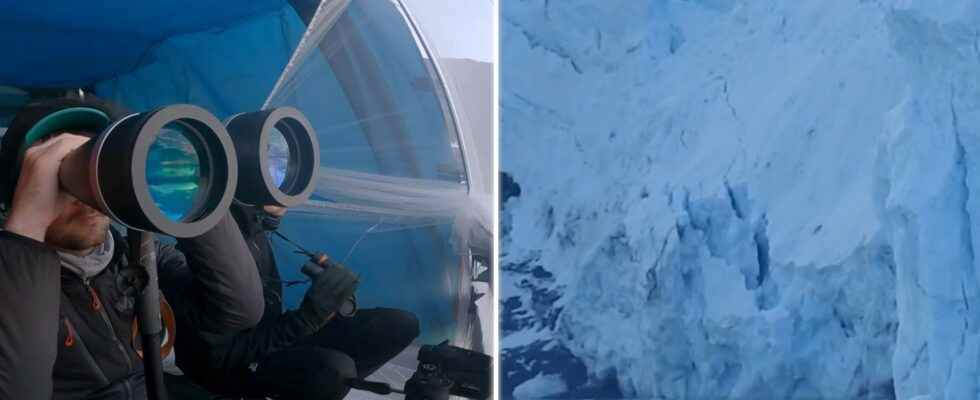A YouTube channel with 7.7 million subscribers discusses the consequences of global warming on glacier calving: a necessity, to the rescue of scientific information, in the face of eco-anxiety.
Humor proves to be a particularly effective vehicle for scientific information. This is how, on the biggest issue of our century, climate change, many youtubeurs and youtubeuses have a card to play to support our work as science journalists – as we do for example in our Environment section. But few are those who, with more than a million subscribers, mention the subject. Amixem’s channel has 7.7 million.
This one specializes in challenges or in reaction videos. And it is in particular in this capacity that his subscribers know him, who are therefore attached to him and his team for the moment of entertainment that he provides them. From time to time, however, a “scientific exploration” type video slips in, for example in the company of the famous Mike Horn. Except that the one that was broadcast on Sunday August 14, 2022 is still a little different: the youtuber goes to Greenland to witness the calving of glaciers (when whole pieces come off during the summer).
Throughout this video, there is no lack of humor, of course, but educational content slips in – Aximen recalls the impact of climate change on calving, the frequency of which has increased in a problematic way. But, better: the youtubeur calls on a real scientist, a glaciologist, Gaël Durand, to interview him on several occasions.
This therefore intervenes to detail the process of calving, but also to recall the role of the climate crisis, its magnitude, the reasons for the Paris Agreement aimed at keeping the planet at 1.5 degrees. In the description, too, Amixem slips several links to the key points of the IPCC report and other such educational elements.
Already watched by nearly 2 million people, the youtuber’s documentary belongs to a type of content that can play a major role today. Because, to inform about climate change, we face a number of obstacles:
- The public’s feeling of being faced with moral lessons;
- The apocalyptic impression capable of generating eco-anxiety, and therefore the lack of desire to take the time to learn about these subjects;
- The very scientific, technical nature of the explanations.
When productions evoke the subject without advancing directly as scientific and educational content on climate change (we think of a film like Don’t Look Up too), we overcome a good part of these obstacles. Not that it is necessary to pass exclusively through this vehicle of entertainment. However, the latter remains underrated: much more is needed, both to address the subject and to highlight scientists like Gaël Durand.

Yes, glaciers are melting due to climate change
As for the situation evoked in the video of Amixem, it is true, because it is also what one notes in the scientific literature. ” Greenland’s ice sheet is losing mass at an accelerating rate in the 21st century, making it the main culprit for sea level rise “, noted a study published in Nature in August 2020.” The melting of Greenland’s glaciers, which plunge into Arctic waters through steep-sided inlets, or fjords, is a major cause of global sea level rise in due to climate change “, also notes NASA, relaying a study published in Science Advances in 2021.
When an ice sheet is in equilibrium, the amount of snow that accumulates on top of the glaciers is equal to the ice lost (through melting, evaporation and calvings). But since the 1990s, observations have shown an imbalance, because the rate of ice loss is greater than the intake. As a result, the glaciers are retreating.
In question, explains the publication, ever warmer ocean waters as well as warmer air. So, although the phenomena of melting and calving are natural, the increase in their frequency in an unbalanced way is not: it is linked to climate change, which is linked to our activities by the emission of greenhouse gases Greenhouse.
And it is far from only concerning Greenland. A study published a few days ago, in August 2022, showed that the water has never been so warm around the largest glacier in the world, in Antarctica.

